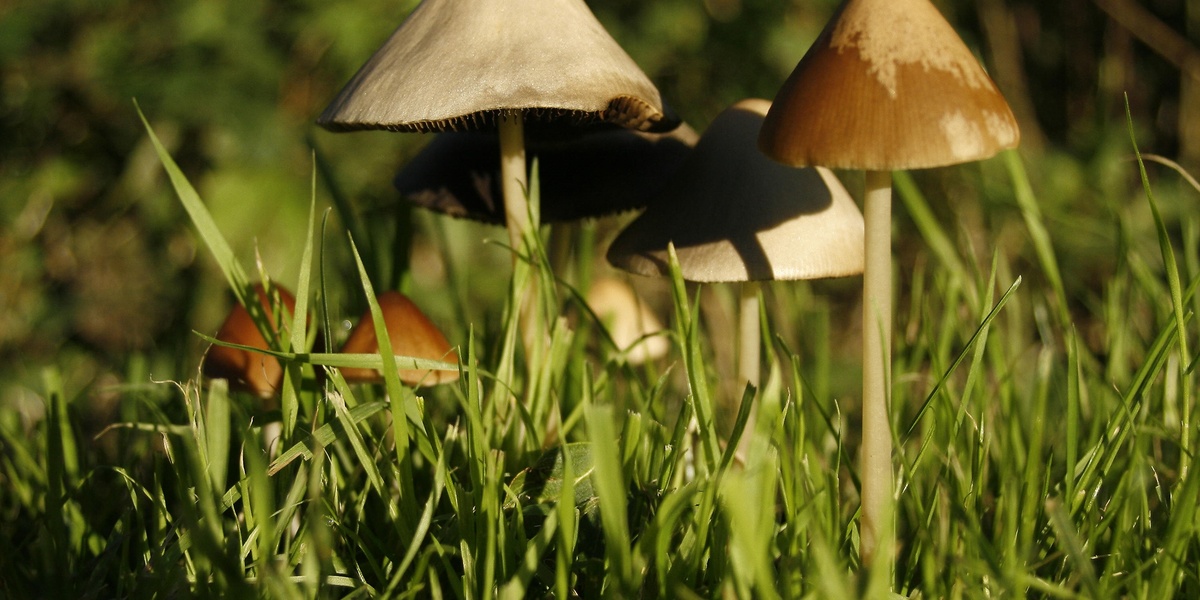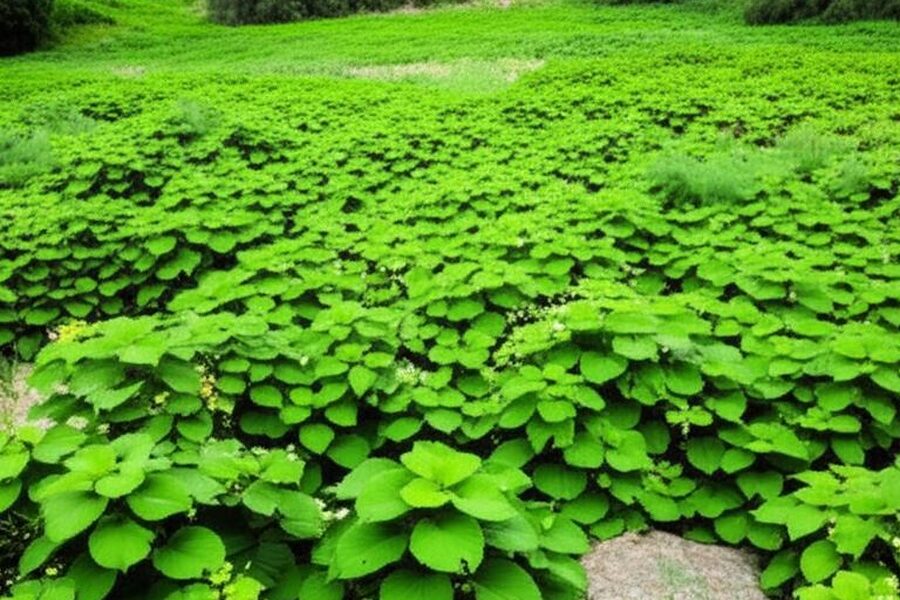Grasslands, with their sweeping vistas and diverse flora, are vibrant ecosystems teeming with life both visible and hidden. While grazers and predators often capture our attention, the true engine of nutrient cycling operates quietly beneath our feet, where a complex network of organisms diligently breaks down organic matter, fueling the entire system.
This crucial breakdown is performed by a dedicated cast of Grassland Decomposers. In this comprehensive list, we highlight 23 essential organisms, ranging from the microscopic Actinomycetes to various Yeasts. For each entry, you’ll find detailed information organized by Scientific Classification, Primary Decomposition Role, and Typical Size Range (mm), all designed to illuminate their vital contributions, which you’ll find below.
What is the primary role of decomposers in a grassland ecosystem?
Grassland decomposers are the unsung heroes responsible for nutrient recycling. They break down dead organic matter, such as fallen leaves, animal waste, and deceased organisms, into simpler inorganic compounds. This process returns essential nutrients like nitrogen, phosphorus, and carbon back into the soil, making them available for plants to absorb. Without decomposers, grasslands would accumulate vast amounts of dead material, and the nutrient cycle would grind to a halt, severely impacting plant growth and the entire food web.
Grassland Decomposers
| Decomposer Group | Scientific Classification | Primary Decomposition Role | Typical Size Range (mm) |
|---|---|---|---|
| Bacteria | Kingdom Bacteria | Break down soluble and complex organic compounds, mineralize nutrients, and drive primary stages of decay | 0.00-0.01 mm |
| Actinomycetes | Phylum Actinobacteria | Decompose tough polymers like cellulose and chitin, producing enzymes that recycle complex organic matter | 0.00-0.01 mm |
| Saprotrophic fungi | Kingdom Fungi (saprotrophs) | Secrete enzymes to break down lignin, cellulose, and other plant polymers, transforming litter into humus | 0.00-100.00 mm |
| Basidiomycetes | Kingdom Fungi, Class Basidiomycetes | Decompose lignin-rich materials and coarse litter, often forming visible fruiting bodies during decay | 1-100 mm |
| Ascomycetes | Kingdom Fungi, Class Ascomycetes | Rapidly colonize and decompose leaves, fine litter, and dung, cycling nutrients in early decay stages | 0.00-50.00 mm |
| Yeasts | Kingdom Fungi (unicellular) | Consume soluble organic compounds and ferment sugars during early decomposition stages | 0.00-0.01 mm |
| Slime molds (Myxomycetes) | Kingdom Amoebozoa (Myxomycetes) | Consume bacteria and fungal spores on litter, recycling microbial biomass and aiding breakdown | 0.01-50.00 mm |
| Heterotrophic protists (protozoa) | Kingdom Protista (various groups) | Graze on bacteria and fungi, regulating microbial populations and releasing mineral nutrients | 0.00-0.20 mm |
| Rotifers | Phylum Rotifera | Feed on bacteria and fine organic particles, contributing to microbial turnover and nutrient release | 0.05-0.50 mm |
| Nematodes | Phylum Nematoda | Many species feed on bacteria and fungi, recycling microbial biomass and releasing nutrients | 0.10-5.00 mm |
| Earthworms | Phylum Annelida, Class Oligochaeta | Consume and fragment litter, mix organic matter into soil, and produce nutrient-rich casts | 10-300 mm |
| Enchytraeids (potworms) | Phylum Annelida, Class Oligochaeta | Fragment litter and stimulate microbial decomposition, especially in cool or acidic soils | 1-20 mm |
| Termites | Order Blattodea (infraorder Isoptera) | Consume cellulose-rich materials and create nutrient hotspots through mound-building and soil turnover | 3-15 mm |
| Isopods (woodlice) | Order Isopoda | Shred leaf litter into smaller fragments, increasing microbial access and decomposition rates | 5-30 mm |
| Millipedes | Class Diplopoda | Consume and fragment decaying plant material, producing fragmented litter for microbial attack | 10-200 mm |
| Springtails (Collembola) | Class Collembola | Graze fungi and bacteria, fragment litter, and distribute microbes across soil and litter layers | 0.20-6.00 mm |
| Soil mites | Subclass Acari (various groups) | Graze fungi and microbes, fragment organic matter, and help control microbial communities | 0.20-2.00 mm |
| Slugs & snails | Class Gastropoda | Consume dead plant material and fungi on the soil surface, aiding physical breakdown and nutrient return | 5-100 mm |
| Dung beetles | Family Scarabaeidae (and others) | Locate, fragment, and bury herbivore dung, incorporating it into soil and enhancing nutrient cycling | 5-40 mm |
| Fly larvae (maggots) | Order Diptera (larval stages) | Rapidly consume soft organic matter like dung and carrion, speeding early decomposition and nutrient release | 1-40 mm |
| Detritivorous beetles | Various beetle families (e.g., Staphylinidae,Dermestidae) | Feed on decaying plant and animal matter, fragmenting debris and exposing it to microbes | 2-50 mm |
| Saprotrophic oomycetes | Kingdom Stramenopila (Oomycota) | Fungal-like decomposers that break down dead plant tissues in moist conditions, complementing true fungi | 0.01-10.00 mm |
| Fungal hyphomycetes (molds) | Kingdom Fungi (hyphomycetes) | Rapidly colonize fresh litter and dung, secreting enzymes that decompose sugars and cellulose in early decay | 0.01-20.00 mm |
Images and Descriptions
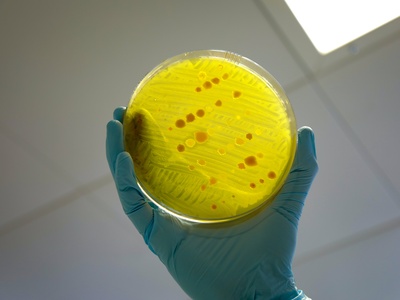
Bacteria
Microscopic single-celled organisms that break down simple and complex organic compounds in soil, driving nutrient mineralization and releasing nitrogen and carbon. Bacteria initiate decomposition, support food webs, and enable plant nutrient uptake in grassland ecosystems.
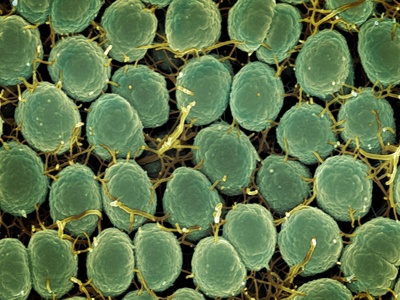
Actinomycetes
Filamentous soil bacteria resembling fungi that decompose tough plant materials like cellulose and chitin, producing earthy odors. Actinomycetes break down complex compounds, suppress pathogens, and contribute to long-term nutrient release and soil structure in grasslands.
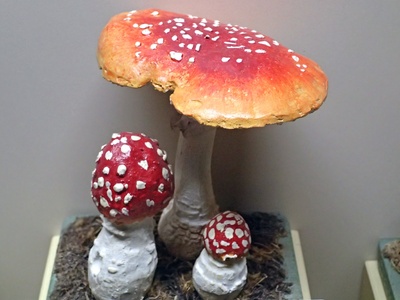
Saprotrophic fungi
Fungi that feed on dead plant and animal matter, secreting enzymes to break polymers like lignin and cellulose. They are central to carbon cycling, forming networks that redistribute nutrients and enable decomposition across grassland soils.
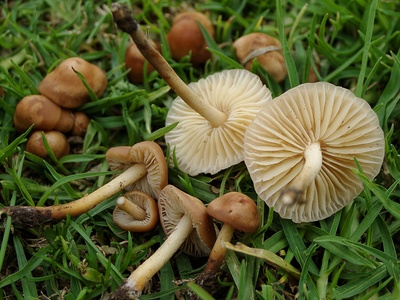
Basidiomycetes
A fungal class including mushrooms and shelf fungi that decompose complex woody materials and leaf litter. Basidiomycetes release nutrients slowly, often producing visible fruiting bodies that indicate active decomposition in grassland patches with woody debris.
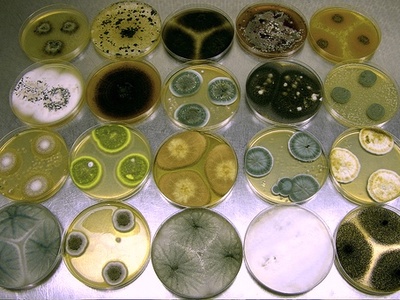
Ascomycetes
Largest fungal class including molds and many litter decomposers that rapidly break down leaves and fine organic matter. Ascomycetes cycle nutrients quickly in grassland soils and compete with bacteria to control decomposition rates and soil health.
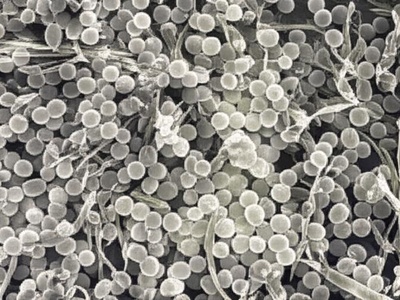
Yeasts
Unicellular fungi that ferment simple sugars and consume soluble organic compounds in soil and plant litter. Yeasts speed early-stage decomposition, influence soil microbial communities, and support nutrient pulses useful for plant growth in grasslands.
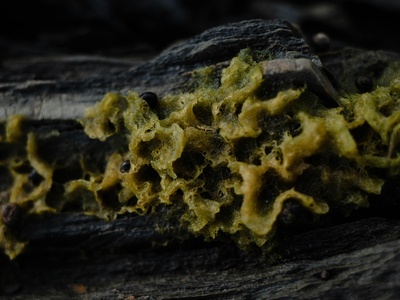
Slime molds (Myxomycetes)
Amoeboid organisms that consume bacteria and fungal spores on decaying plant material, often forming visible plasmodia or fruiting bodies. Slime molds recycle microbial biomass and help break down litter patches across grassland surfaces.
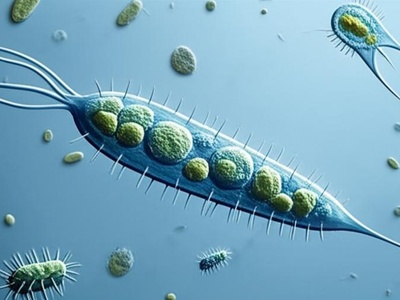
Heterotrophic protists (protozoa)
Single-celled eukaryotes such as amoebae, ciliates, and flagellates that graze on bacteria and fungi, regulating microbial populations. Their feeding releases nutrients in mineral form, accelerating decomposition and nutrient availability for plants.
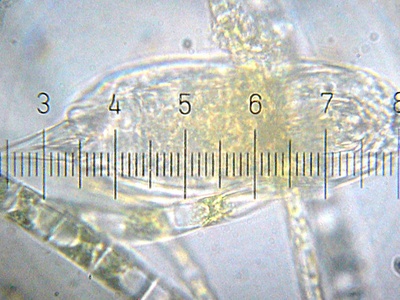
Rotifers
Tiny multicellular microfauna that feed on bacteria, algae, and fine organic particles. Rotifers are active in soil moisture films and contribute to microbial turnover, helping convert microbial biomass into plant-available nutrients in grassland soils.
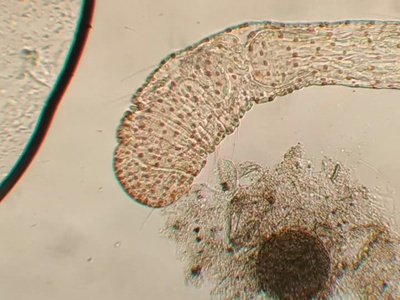
Nematodes
Roundworms occupying diverse soil niches; many species feed on bacteria and fungi, some on roots. Bacterivorous and fungivorous nematodes regulate microbes and release nutrients, forming an essential link in grassland decomposition food webs.
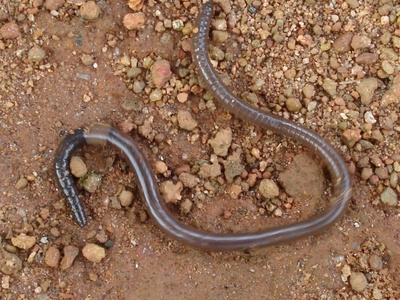
Earthworms
Burrowing oligochaetes that consume litter and soil, fragmenting organic matter and mixing it into the soil profile. Earthworms accelerate decomposition, enhance aeration, and create nutrient-rich casts that boost grassland productivity.
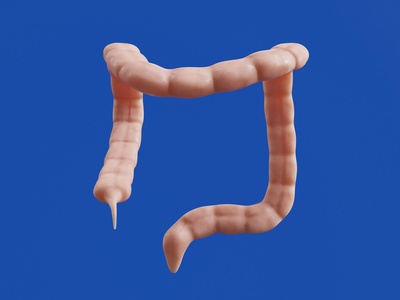
Enchytraeids (potworms)
Small white oligochaete worms common in grassland soils that fragment litter and stimulate microbial activity. Enchytraeids speed decomposition in cool or acidic soils where larger earthworms are less common, aiding nutrient cycling.
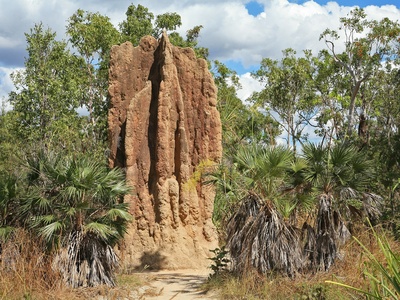
Termites
Social insects that consume cellulose-rich materials, including dead grasses and woody debris in some grasslands and savannas. Termites break down tough plant fibers, enhance soil mixing, and create hotspots of nutrient availability.
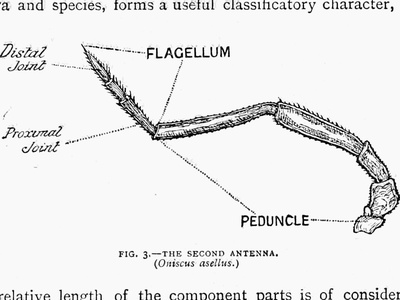
Isopods (woodlice)
Terrestrial crustaceans that shred leaf litter and coarse plant debris into smaller pieces, increasing surface area for microbial decomposition. Woodlice help maintain soil moisture and contribute importantly to nutrient recycling in many grasslands.
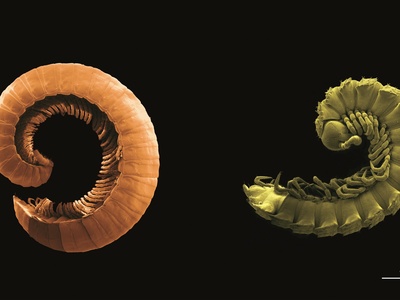
Millipedes
Detritivorous arthropods that feed on decaying plant material, shredding litter into finer particles. Millipedes speed microbial breakdown, help build humus, and support stable decomposition processes in grassland ecosystems; they often inhabit moist microhabitats and influence soil structure.
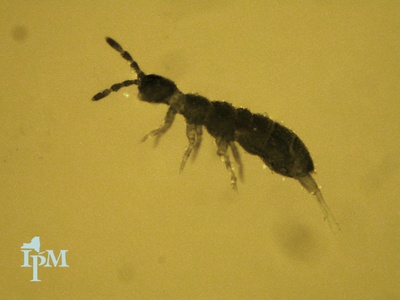
Springtails (Collembola)
Tiny hexapods that feed on fungi, bacteria, and decaying plant fragments, fragmenting litter and distributing microbes. Springtails are abundant in grassland soils and play a key role in early decomposition and soil food-web dynamics.
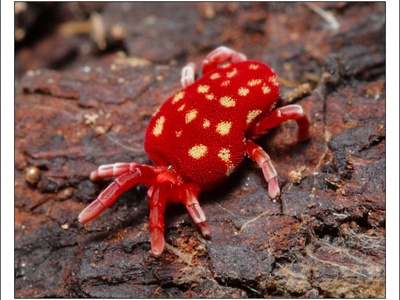
Soil mites
A diverse group including oribatid and other mites that graze on fungi, lichens, and decaying matter. Soil mites fragment organic material, control microbial populations, and contribute to nutrient release and soil stability in grasslands.
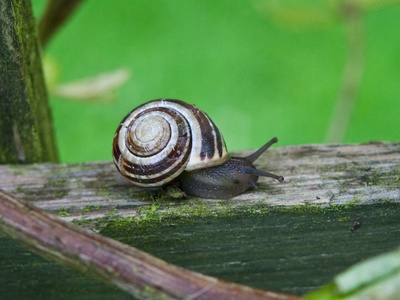
Slugs & snails
Terrestrial gastropods that feed on dead plant material, fungi, and litter on the soil surface. Slugs and snails accelerate decomposition by breaking down coarse debris and creating nutrient-rich droppings accessible to microbes.
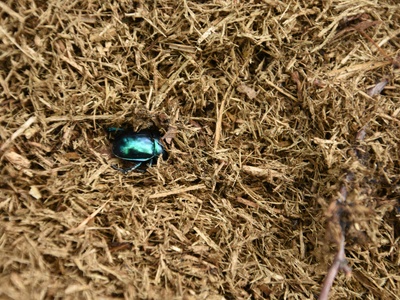
Dung beetles
Beetles that locate and bury herbivore dung, fragmenting and incorporating it into soil. Dung beetles recycle nutrients, reduce parasite loads, and enhance soil aeration and moisture retention in grassland ecosystems.
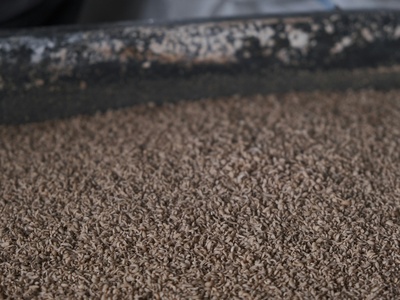
Fly larvae (maggots)
Larvae of many fly species that consume dung, carrion, and decaying plant matter, rapidly breaking down soft organic materials. Maggots speed nutrient turnover and provide food for predators, linking decomposition to higher trophic levels.
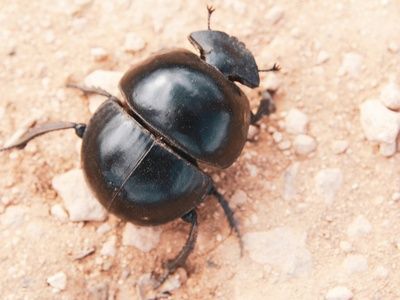
Detritivorous beetles
Includes rove, dermestid, and other beetles whose larvae and adults feed on dead plant and animal matter. These beetles fragment organic debris and expose it to microbial decay, supporting steady nutrient cycling in grasslands.
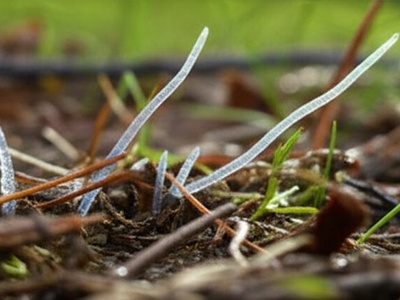
Saprotrophic oomycetes
Fungal-like protists that decompose dead plant tissues and litter in moist soils. Saprotrophic oomycetes contribute enzymes that break down complex compounds, complementing true fungi in grassland decomposition under wet conditions.
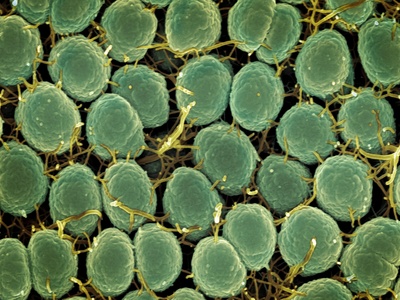
Fungal hyphomycetes (molds)
Fast-growing filamentous fungi that rapidly colonize fresh litter and dung, secreting enzymes to decompose sugars and cellulose. Molds dominate early stages of decomposition, driving quick nutrient release in grassland soils.
